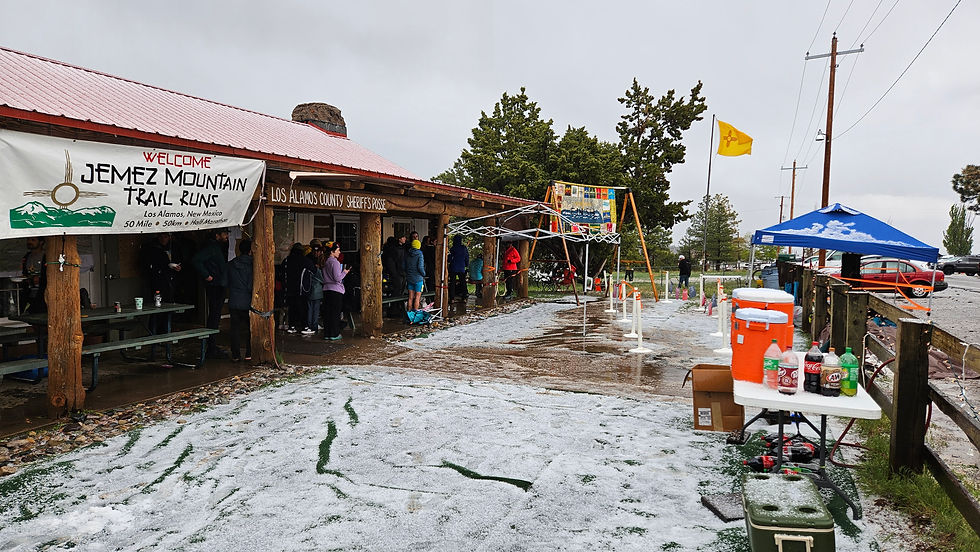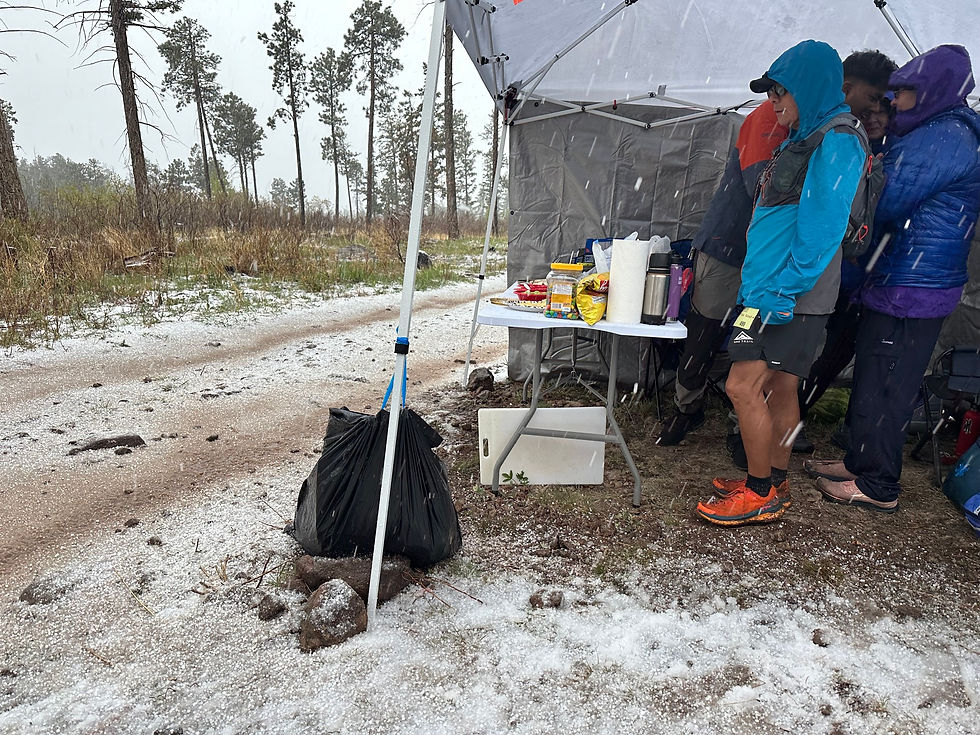JMTR 2024 Update for May 13, 2024

Hello JMTR Runners, Volunteers and Spectators,
Thank you all for supporting the “wild” 2024 JMTR event. The weather made for difficult conditions for the 50 mile and 50km runners. Most who ran the 15-mile event lucked out with ideal conditions for running. The 50-mile and 50-km runners were faced with numerous storms in the morning followed by an intense storm with copious amounts of hail in the early afternoon. There was even a very rare tornado sighted just a few miles west of the course highpoint on Pajarito Mountain.
Because of this intense storm, race management decided to divert all 50 mile runners from the Mitchell aid station to the Posse Lodge for a 50 km finish, thereby preventing them from continuing on the 50 mile course to the Guaje Ridge AS. This decision was made for the safety of the 50 mile runners, and especially the safety of the volunteers at the Guaje Ridge aid station (AS). There was intense electrical activity at Guaje Ridge AS and weather radar indicated a more intense storm approaching (the hailstorm). The Guaje Ridge AS is a remote hike-in AS that is very exposed with little shelter and no protection from lightning. At the local level, the aid station captains made decisions for the safety of runners with some aid stations holding runners until they were cleared to resume on the course. The Mitchell Aid station directed a large mass of runners to a nearby house or to continue moving to the finish. In retrospect, these were great on-the-fly decisions as numerous pop-up shelters collapsed from the weight of the hail.
We realize that some runners may be disappointed to not finish because of these decisions. The Jemez Mountain Trail Runs does prioritize the safety of the runners and volunteers above all else. We do believe that the required gear policy and the quick decisions did prevent most runners from getting extreme hypothermia and requiring advanced medical care. Even with the required gear, many runners opted to carry the minimal amount, which allowed them to proceed between aid stations without needing help but, ultimately, some runners had to drop because they got too cold.
After reflecting on the race day events more, we wanted to share some thoughts on these types of extreme weather events. Race management often needs to make difficult decisions when events like this happen. The decision to divert 50-mile runners was based on a forecast that came to fruition and has been generally well received. Had the weather not turned out as severe, some runners may have questioned these decisions. Another example of this is the mandatory gear policy. The mandatory gear requirement is a proactive decision designed to help keep the runners safe in inclement weather and allowing the race to proceed in a safe manner. When you are required to carry gear, the requirement is based on the forecasted weather (actually a little worse than the forecast). We ask that you not get upset if the day turns out to be nice when you had to carry the mandatory gear. The next time you are at an event encountering safety related issues, please be aware that the decisions are being made for the safety of everyone at the event even if you individually are prepared.

























Comments